Ada Lovelace Day: Pantheon of Women
Tuesday, March 24, 2009 by Billy
[I have not found the time to write a blog about Marie Skłodowska Curie, as I thought of doing within the context of Ada Lovelace Day. I will use a subterfuge then: on March 8, 2008, for the International Women's Day, I posted an entry on my defunct blog on Yahoo! 360° that dealt with nine French Women who would deserve to rest in the Panthéon in Paris. The entry disappeared with that blog. Here it is again in this one. Granted, most of the women celebrated were not involved in technology. Yet everyone of them, each in her field, can be considered 'female role models' undoubtedly.]
I must say I am divided about the International Women's Day, celebrated every March 8th. I certainly agree women are still not considered equal to men in a lot of countries, for cultural and religious reasons. Even in western countries, there is no fair equality between genders in many fields, salaries especially.
On the other hand, I don't believe a yearly celebration can change the way men consider women, or make a religion evolves. I find it cheaply gives people clear conscience sometimes: one Women's Day a year, and 364 (365 even, this year) uncelebrated Men's Days!
Anyway... I went to the Panthéon this morning to see the portraits of nine French female figureheads displayed on its facade to celebrate Women's Day, and take pictures myself. Le Panthéon is a neoclassical monument on the top of the Montagne Sainte-Geneviève, in the 5th arrondissement of Paris. It was originally built as a church dedicated to St. Genevieve, the patron of the city. It is now the burial place for 'French National Heroes' (Pantheon in Greek means 'All the Gods'). The inscription in letters of gold above the entrance reads AUX GRANDS HOMMES LA PATRIE RECONNAISSANTE (To the great men [from] the grateful homeland).
The word Men here is supposed to mean Human beings, yet among the 73 honoured people buried here, there is only one woman, Marie Curie. Although it was definitely theoretical, I was interested to see which women the Parisian elites had considered deserving enough to be next to Mirabeau, Voltaire and Hugo. Here they are.
— : — : — : — : — : —
The Panthéon — Paris, 8 March 2008 |
On the other hand, I don't believe a yearly celebration can change the way men consider women, or make a religion evolves. I find it cheaply gives people clear conscience sometimes: one Women's Day a year, and 364 (365 even, this year) uncelebrated Men's Days!
Anyway... I went to the Panthéon this morning to see the portraits of nine French female figureheads displayed on its facade to celebrate Women's Day, and take pictures myself. Le Panthéon is a neoclassical monument on the top of the Montagne Sainte-Geneviève, in the 5th arrondissement of Paris. It was originally built as a church dedicated to St. Genevieve, the patron of the city. It is now the burial place for 'French National Heroes' (Pantheon in Greek means 'All the Gods'). The inscription in letters of gold above the entrance reads AUX GRANDS HOMMES LA PATRIE RECONNAISSANTE (To the great men [from] the grateful homeland).
The word Men here is supposed to mean Human beings, yet among the 73 honoured people buried here, there is only one woman, Marie Curie. Although it was definitely theoretical, I was interested to see which women the Parisian elites had considered deserving enough to be next to Mirabeau, Voltaire and Hugo. Here they are.
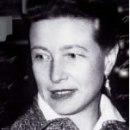 Simone de Beauvoir (1908-1986 — philosopher and writer). An existentialist, she lived with Jean-Paul Sartre for several decades. She was among the most influential intellectuals in the second half of 20th century. Her book The second sex is regarded as a major feminist book. Simone de Beauvoir (1908-1986 — philosopher and writer). An existentialist, she lived with Jean-Paul Sartre for several decades. She was among the most influential intellectuals in the second half of 20th century. Her book The second sex is regarded as a major feminist book. |
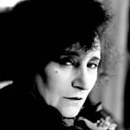 Colette (1873-1954 — writer). Her literary talent was first exploited by her husband Willy, but she became emancipated... and scandalous for a time (music-hall shows and overt affairs with men and women). She published around 50 novels, one can divide into idyllic natural tales and dark struggles in relationships and love. Colette (1873-1954 — writer). Her literary talent was first exploited by her husband Willy, but she became emancipated... and scandalous for a time (music-hall shows and overt affairs with men and women). She published around 50 novels, one can divide into idyllic natural tales and dark struggles in relationships and love. |
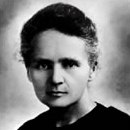 Marie Curie (1867-1934 — Physicist) Born in Poland, Maria Skłodowska went to Paris aged 24 to study and became a naturalized French. At the Sorbonne, she met and married Pierre Curie. She won the Nobel Prize twice: in Physics in 1903 (discovery of radioactivity) and Chemistry in 1911 (discovery of Radium and Polonium). Marie Curie (1867-1934 — Physicist) Born in Poland, Maria Skłodowska went to Paris aged 24 to study and became a naturalized French. At the Sorbonne, she met and married Pierre Curie. She won the Nobel Prize twice: in Physics in 1903 (discovery of radioactivity) and Chemistry in 1911 (discovery of Radium and Polonium). |
 Charlotte Delbo (1913-1985 — resistance fighter). She was arrested by the Nazis in 1942 and sent to Auschwitz concentration camp. She was one of the 49 women who survived. She wrote several books about it, including a biography of every prisoner who was with her in the convoy to Auschwitz. Charlotte Delbo (1913-1985 — resistance fighter). She was arrested by the Nazis in 1942 and sent to Auschwitz concentration camp. She was one of the 49 women who survived. She wrote several books about it, including a biography of every prisoner who was with her in the convoy to Auschwitz. |
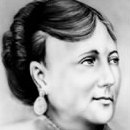 Maria Deraismes (1828-1894 — politician and freemason). A figurehead of feminism, she was a republican (i.e. not royalist), antireligious politician. In 1893, she co-founded the first International Order of Mixed Freemasonry, advocating equality between women and men, Le Droit Humain. Maria Deraismes (1828-1894 — politician and freemason). A figurehead of feminism, she was a republican (i.e. not royalist), antireligious politician. In 1893, she co-founded the first International Order of Mixed Freemasonry, advocating equality between women and men, Le Droit Humain. |
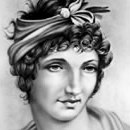 Olympe de Gouges (1748-1793 — politician). She is regarded as one of the first French feminists. In her Declaration of the Rights of Woman and the Female Citizen, she challenged the practice of male authority and the notion of male-female inequality. She was executed by guillotine during the Reign of Terror. Olympe de Gouges (1748-1793 — politician). She is regarded as one of the first French feminists. In her Declaration of the Rights of Woman and the Female Citizen, she challenged the practice of male authority and the notion of male-female inequality. She was executed by guillotine during the Reign of Terror. |
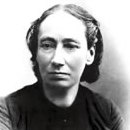 Louise Michel (1830-1905 — politician). A revolutionary and an anarchist, she was active during the Paris Commune as an ambulance woman. After the Versaillais won, she was sentenced to deportation in New-Caledonia. She returned to Paris 7 years later and preached the revolution until her death, despite several stays in jail and exile in London. Louise Michel (1830-1905 — politician). A revolutionary and an anarchist, she was active during the Paris Commune as an ambulance woman. After the Versaillais won, she was sentenced to deportation in New-Caledonia. She returned to Paris 7 years later and preached the revolution until her death, despite several stays in jail and exile in London. |
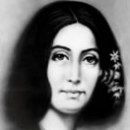 George Sand (1804-1876 — writer) Born Aurore Dupin, she decided to take a male nick to be more easily published. She would dress as a man, smoke the pipe, ride like a man, yet she had tumultuous liaisons with Alfred de Musset and Frédéric Chopin. She was a feminist, asking for women's right to divorce and equality in civil rights. George Sand (1804-1876 — writer) Born Aurore Dupin, she decided to take a male nick to be more easily published. She would dress as a man, smoke the pipe, ride like a man, yet she had tumultuous liaisons with Alfred de Musset and Frédéric Chopin. She was a feminist, asking for women's right to divorce and equality in civil rights. |
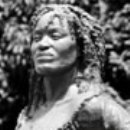 Solitude (1772-1802 — fighter against slavery). In 1794, the revolution freed this mulatto slave. When Napoléon Bonaparte restored slavery in 1802, Solitude rose up in arms although she was pregnant. She was wounded, captured and sentenced to death. Her hanging was delayed until the day after she gave birth. Slavery in France was abolished for good in 1848 only. Solitude (1772-1802 — fighter against slavery). In 1794, the revolution freed this mulatto slave. When Napoléon Bonaparte restored slavery in 1802, Solitude rose up in arms although she was pregnant. She was wounded, captured and sentenced to death. Her hanging was delayed until the day after she gave birth. Slavery in France was abolished for good in 1848 only. |
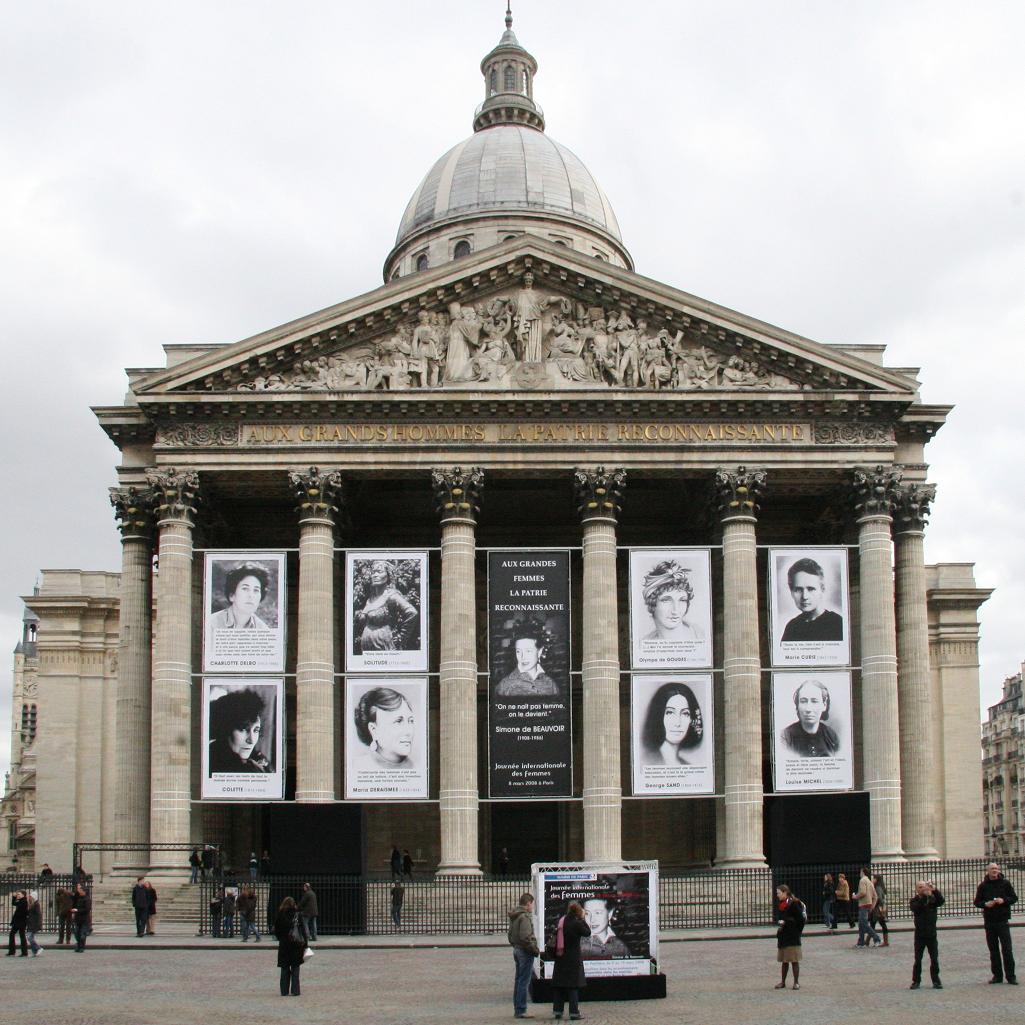
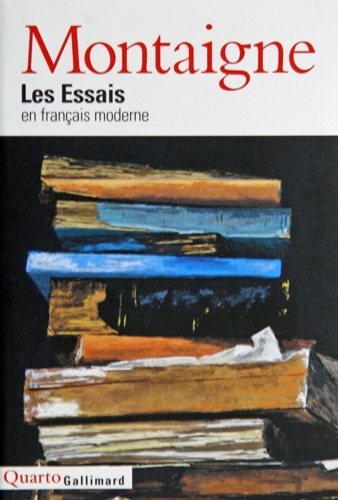

I find it cheaply gives people clear conscience sometimes: one Women's Day a year, and 364 (365 even, this year) uncelebrated Men's Days...
I agree, but at the same time think that just maybe highlighting women's successes this one day, may make a difference to the way some people think for the other 364 (men's) days.
This post, like so many of yours highlights how little I know about French culture and history. In this post, for example, apart from Marie Curie, I only know of the three 'literary' women. The first two I've read a number of books (in English translation only) and George Sand by name and 'story' only.
Rather than be overwhelmed by the fact of my ignorance, I am excited by how much I can discover through reading and visiting.
Michelle, although I am French, I confess I did not know of Charlotte Delbo and Maria Deraismes myself before March, 2008. Furthermore, most people will hardly know a lot about culture and history of other countries, unless they have a special reason to be interested in. Because you are, I am pretty sure you do know a lot about French culture and history. In any case, more than I know about those of Australia... rugby excepted perhaps.
Hi Billy, yes I guess you have a point there. It's interesting that when I was a child, Australian children learned more about English history than anything else. There was more allegiance to the Commonwealth in those days. In high school we learned about Russian and German History, but of course that is a very limited education centring mainly on the various wars.
As you say, it only when you develop a special interest that you educate yourself about various cultures.
So, you know a little about Australian rugby? That is more than I know about Australian rugby. I believe we have a team, but that is all I know! Oh yes, I think they might be called the Wallabies. I guess that confirms your point. I have zero interest in 'sporting cultures' so barely notice they exist!
Ohhhh you followed up on Ada Lovelace day! Kudos to you!
I have been so ridiculously busy... well you see that, I only now have come back to your blog (and that's because I am heavily procrastinating on writing a completely useless essay)
How could I have done otherwise, Saskia? You placed an order for it, didn't you?